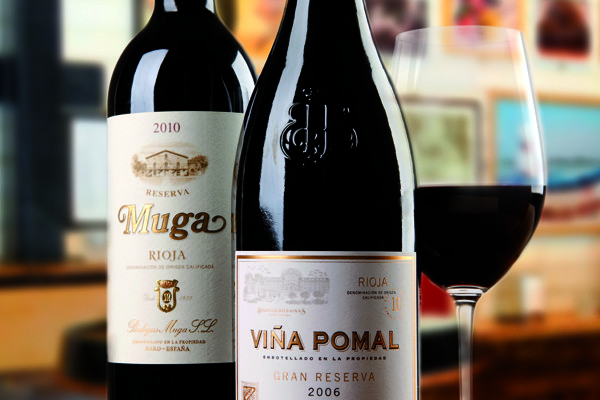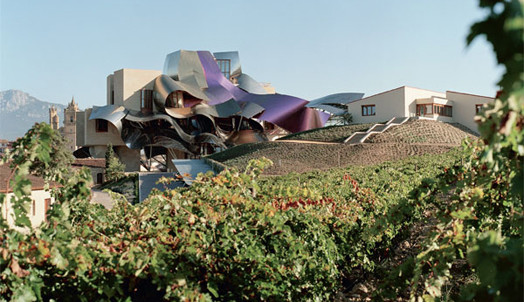Marqués de Riscal – founded in the mid-19th century by Guillermo Hurtado de Amézaga – is today unequivocally one of the titans of Spanish wine. This is reflected in not only its respect of the country’s winemaking heritage, but also for its persistent eye on the future and pioneering attitude to architecture, as represented by its Frank Gehry-designed City of Wine complex; reminiscent as it is of rolling rivers and tumbling waves. Riscal can certainly never be accused of resting on its laurels.

‘Really old vines are our main focus as we feel such vines give the resulting wines more depth and flavour,’ says winemaking director Francisco Hurtado de Amézaga. Director general José Luis Muguiro adds: ‘Bodega de los Herederos del Marqués de Riscal has more than 410ha of vines that are over 60 years old, making it Rioja’s largest collection of old vines. Many of these vineyards are actually even older: Los Campos, Río Seco Huerta and Los Campos Fondo were all planted in 1910 and Verdecillo was planted in 1913.’
Its heartland is, of course, Rioja and it has long been a standard-bearer for this famous region. The crianzas, reservas and gran reservas are absolutely textbook and brilliant examples of their type, but it’s with its top cuvées that Riscal takes things to another level.

The trio of wines below fully justify their much-vaunted reputation, but at the same time their foundations are still very simple: old and very old vines.
It’s a foundation which has served Riscal well, with the wines garnering a plethora of medals, trophies and top-drawer scores over the years, and being testament to Riscal’s wholehearted, uncompromising drive to extract the very best from its land.
Barón de Chirel, Verdejo Viñas Centenarias, Vinos de la Tierra de Castilla y Léon

This arguably represents the epitome of Riscal’s devotion and dedication to crafting superlative wines from old, weathered and hardy vines.
The vineyards from where this wine was born are all pre-phylloxera, surviving the epidemic which devastated swathes of Europe’s vineyards in the late 19th century. We’re talking about ungrafted vines which are more than one century old and are tended to with a level of care and skill they richly deserve. Some are planted at 900m above sea level, an altitude which imbues the wine with wonderfully natural acidity.
The fruit is gently handpicked into 20kg crates and then ferried to the winery where it undergoes a double-selection process (first the bunches, then the individual berries), before being pressed, with only the very first and finest free-run juice being used.
Post-fermentation the wine is then matured in meticulously selected French oak of varying sizes for at least six months where it evolves and takes on extra layers, before being transferred to bottle where it rests until deemed suitable for release.
Barón de Chirel, Rioja

Yet another example of Riscal’s focus on truly ancient vines when it comes to its flagship releases.
Barón de Chirel was born from a trial of advanced vinification techniques; the subject being plots of exceedingly old vines ranging from between 80 and 110 years old, with super-low yields and astonishing quality.
It is only produced in the very best of years and its production demands the very highest level of procedures; for example, the 1995 vintage saw the introduction of sorting tables and hand-sorting of the fruit, marking out Riscal as the very first winery in Spain to employ such a process.
The blend comprises 70% Tempranillo (the other 30% being a closely guarded secret) and it is aged for anything between 18 and 24 months in fine-grained, Allier oak prior to being allowed to fully realise its potential by maturing in bottle for a further two years.
A truly boutique, precious but still accessible offering, it’s a fine partner for red meats, game, boar, deer and mature cheeses.
Finca Torrea, Rioja

Riscal freely admit that Finca Torrea is perhaps not made in the classic style of the house, what with its slightly more contemporary, fruit-driven character, although it does still bear the unmistakable hallmark of Riscal.
This is produced from fruit grown, unsurprisingly, on old vines on land surrounding the Torrea estate where the Riscal winery sits in the Alavesa sub-region of Rioja, and the label’s off-beat design is inspired by the bird’s eye view of this vineyard.

Riscal strives not to pick the grapes too late in order to retain a level of acidity which not only instills in the wine the desired level of freshness, but also aids its ability to age in bottle.
Once handpicked, the grapes are fermented in small French barrels and following malolactic fermentation, matured for 18 months in fine-grained French Allier barrels, before spending a brief period in bottle before release.
Suave and immediately appealing, this is a wine which dovetails fantastically with your classic meat dishes including spicy sausages and stews, but also shows its dexterity by being an able companion to strongly-flavoured fish dishes.
Translated by ICY
All rights reserved by Future plc. No part of this publication may be reproduced, distributed or transmitted in any form or by any means without the prior written permission of Decanter.
Only Official Media Partners (see About us) of DecanterChina.com may republish part of the content from the site without prior permission under strict Terms & Conditions. Contact china@decanter.com to learn about how to become an Official Media Partner of DecanterChina.com.






Comments
Submit